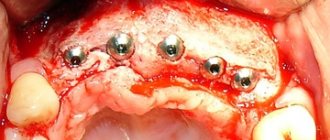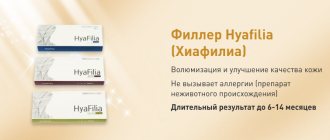History of circumcision
The first information about circumcision appears among the ancient peoples of Phoenicia and Babylon; similar practices are found among indigenous Australians and many tribes in Africa. The Egyptians, the first adherents of Christianity, practiced circumcision. Circumcision has become firmly established among the Jewish people.
Removal of the foreskin was associated with the boy's growing up, but among most peoples the procedure was of a religious nature. [12]
Currently, many peoples have preserved ritual and religious circumcision, which is performed by special people or they are present during the procedure performed by a surgeon. Research shows that circumcision is useful for the prevention of many urological diseases in both men and women. But circumcision is not recommended as a routine procedure performed on all newborn boys. [
Advantages of the procedure
There is compelling evidence that supports the benefits of circumcision and its beneficial effects on men's health. This is due to changes in the anatomical features of the penis.
A coronal groove runs along the edge of the head, in which in uncircumcised men a specific secretion, smegma, accumulates. This is the secretion of the sebaceous glands, consisting mainly of fats. It contains a small amount of moisture, as well as microbiota, individual in composition for each man.
Smegma is removed during hygiene procedures, but if the rules are not followed, it accumulates and can cause inflammation. Pathogenic microorganisms use the secretions of the glands as a nutrient medium, and a warm and humid environment supports their reproduction.
The microflora in uncircumcised men is represented by anaerobes that can survive in airless space. The most numerous representatives of the families:
- Pseudomonadaceae;
- Oxalobactericeae;
- Prevotellaceae;
- Clostridium. [3]
Among them there are species that can cause bacterial vaginosis in women. [13]
Research shows that in heterosexual men, circumcision reduces the risk of HIV infection by 60%. For female sexual partners of circumcised men, such a pattern has not been established. [9] The risk of HIV infection is associated with anaerobic microflora. Its representatives support the activity of Langerhans cells, which have CD4 receptors and bind to the immunodeficiency virus.
Circumcision reduces the likelihood of carrying the human papillomavirus and developing penile papillomatosis. Smegma is also capable of accumulating viral particles. Under their influence, immune responses change, simultaneously increasing the risk of HIV infection. Studies show that in 11% of cases, a decrease in HIV infection is associated with a lower incidence of inflammatory diseases of the penis, and in 8.6% - with a decrease in HPV infection. [10]
The human papillomavirus not only causes cervical cancer in women, but also causes penile papillomatosis in men. When examining uncircumcised men, it was found in the coronal sulcus in 51%. In 31% of cases it was a high-oncogenic risk virus, and in 29% the diagnosis showed more than one type of HPV. In circumcised men, the number of infected and carriers does not exceed 29%. [eleven]
Additional research shows that male circumcision reduces the risk of developing other sexually transmitted infections (gonorrhea, trichomoniasis, chlamydia), as well as various dermatological diseases and injuries to the penis during sexual intercourse.
But the positive effect of circumcision is not observed in men who prefer homosexual relationships. In this group, the number of HIV cases does not depend on the circumcision performed. [4]
Men who are circumcised as newborns have a reduced risk of developing penile cancer. Among uncircumcised people this figure is 3.2 times higher. The likelihood increases with a history of phimosis. [2]
Recovery
The rehabilitation period after surgery is about 3-4 weeks. After the flesh is cut, swelling appears, which can be relieved with medications prescribed by the doctor. You can use folk recipes from chamomile or calendula decoctions.
There is a possibility of inflammatory processes occurring, since men are not able to properly perform all the necessary hygiene procedures after surgery. But partial circumcision is effective because the risk is low and healing is quite fast.
The surgeon must prescribe all the necessary medications that will promote high-quality wound healing and restoration of function.
IMPORTANT! Avoid sexual activity until the wound is completely healed.
Types of circumcision
The operation is performed in several ways. The doctor chooses it depending on the patient’s age and the condition of the foreskin. Common methods of circumcision are:
- two-incision technique;
- excision using the Plastibell device;
- circumcision using a Gomko clamp.[6]
There are also proprietary techniques: operations of Gosse, Roser, Schloffer, Gagerdon, Welsh, Fordel, Drachter, which are used in various modifications. Many of these manipulations have complications in the form of the development of scar tissue and subsequent deformation of the penis. Modern methods and materials help to avoid the disadvantages of circumcision. In young children, a sutureless technique is often used, and some clinics practice laser circumcision.
Who is circumcision recommended for?
Circumcision is performed on boys of different ages, starting from the neonatal period, and on adult men. The indications differ in each case. Circumcision is mandatory in boys if the following acute or chronic diseases are observed:
- phimosis;
- recurrent balanoposthitis;
- condylomas;
- injuries to the foreskin;
- tumor processes. [1]
In adults, circumcision can be performed for the following medical reasons:
- excess foreskin - its excess is excised around the circumference of the penis;
- covered penis - due to scarring, the foreskin does not move, the head cannot be exposed, which increases the risk of developing inflammatory diseases. Therefore, the scar ring is dissected and tissue is removed around the circumference;
- discrepancy between the size of the foreskin and the shaft of the penis;
- phimosis is a pathological condition in which it is impossible to remove the head of the penis due to complete or partial immobility of the foreskin. [6]
Phimosis in men and boys often occurs with balanitis - inflammation of the glans penis. Narrowing of the foreskin can lead to urination problems, and in severe cases to paraphimosis, when the head of the penis is pinched by a ring of foreskin. This can cause tissue necrosis and necrosis.
Male circumcision is performed for premature ejaculation. It is believed that the operation reduces the sensitivity of the head, which allows you to hold back ejaculation for longer. But studies show that in most cases, circumcised men who had the procedure performed for medical reasons did not notice any changes in their sex lives. Sexual partners also did not negatively characterize sexual intercourse with a circumcised man. [12]
True medical indications for circumcision in childhood occur in 10-15% of boys; this number is even smaller in men. Circumcision is often carried out at the will of the parents or the patient if they want to follow socially accepted norms in their group, religious or national traditions.
How much flesh is removed?
Partial circumcision can be carried out in several ways:
- Low cut.
In this case, the surgeon removes as much of the foreskin as possible, while preserving the external prepuce. The suture after the operation is located at the very base of the coronary sulcus. - High cut. The outer part of the flesh is removed, while the inner prepuce is preserved.
Despite the choice of one or another circumcision option, the doctor is faced with the question of whether to keep or remove the frenulum.
- Its removal will prevent the spread of infections on the one hand, but on the other hand it is the most erogenous zone in men.
- Its removal can significantly reduce sensitivity during sexual intercourse.
- Only premature ejaculation in a man can serve as an indisputable removal.
Contraindications
Circumcision is a minor surgical procedure, but it requires preparation and examination. It allows you to exclude conditions in which surgery or the use of anesthesia is contraindicated.
A child should not be circumcised if he or she has abnormalities in the development of the penis. These include:
- urethral hypospadias is an anomaly in which the opening of the urethra may not be on the head, but under it, on the body, at the base or scrotum;
- epispadias – complete or partial splitting of the urethra. [1]
In this condition, circumcision is technically impossible; the boy requires plastic surgery to restore the urethra. [7]
A relative contraindication to circumcision is inflammatory diseases of the penis. In some cases, circumcision is the only way to relieve the condition. In case of pathologies of blood bleeding, the operation is performed with caution. For the same reason, it is not recommended to circumcise newborns up to 8 days old; physiological deficiency of vitamin K and insufficiency of the coagulation system affect it. [1]
If a patient must take anticoagulants or antiplatelet drugs but needs to be circumcised, they should stop using the medications 2-3 days before surgery and resume treatment after surgery. [8]
Separate contraindications to surgery are somatic diseases, in which anesthesia is contraindicated, and allergies to anesthetic agents. Such conditions include severe diseases of the cardiovascular and respiratory systems, uncompensated diabetes mellitus, any decompensated disease of internal organs, and a febrile state.
Types of foreskin circumcision in men
Circumcision is carried out in different ways:
- minimal circumcision involves excision of a small area of the foreskin and leaving a significant portion of it intact,
- partial deprives the patient of a piece of tissue covering the head of the penis, while only the opening of the urethra remains open,
- free circumcision removes most of the foreskin, a smaller portion covers the coronal groove of the penis,
- moderate leaves the head of the genital organ always open, sometimes a small fold of tissue remains at the coronary groove,
- Tight circumcision is rarely done and involves complete removal of an area of skin.
Preparation for circumcision
Circumcision is carried out as planned. Therefore, after visiting a urologist, the patient must undergo an examination. Referrals are provided for the following tests:
- clinical blood test;
- general urine analysis;
- coagulogram;
- biochemical blood test, including glucose;
- ECG;
- analysis for HIV, syphilis, hepatitis;
- smear for gonorrhea.
For chronic diseases, additional examination may be prescribed to clarify the patient’s condition and ability to undergo anesthesia and surgery. [8]
Operation techniques
Circumcision in adults is performed under local anesthesia. To do this, 1 ml of a 1-2% lidocaine solution or a 0.25-0.5% bupivacaine solution is injected into the base of the penis. In children, the operation is performed under general anesthesia; drugs are administered intravenously or inhaled; these methods are often combined.
The progress of the operation depends on the chosen technique. In older children and men, the two-incision technique is used. The penis is treated with an antiseptic solution. On the skin with a marker, mark the circumference of the coronary sulcus and the V-shaped frenulum. The skin is cut along the marked line using a scalpel. It is not recommended to use scissors to get a more even cut. A suture holder is not used to reduce the risk of scarring.
The skin is shifted to the base of the penis, and a line is drawn along the coronal groove with a marker. Then another incision is made, and the resulting ring of skin is carefully removed from the body of the penis, simultaneously coagulating the bleeding vessels. [6]
The edges of the wound are aligned and sutures are applied with catgut. A tourniquet is made from strips of gauze, which is lubricated with Vaseline. It is wrapped around the postoperative wound in the form of a roller and secured with threads. The penis is wrapped in a sterile napkin, which is glued with a bandage to the pubis.
An alternative method of circumcision is used in young children if the glans penis cannot be exposed. To do this, the foreskin is grabbed with mosquito clamps on opposite edges. The head is displaced with a damp cloth, and the remaining smegma is removed. The edge of the coronary sulcus is marked with a marker, without retracting the skin. The skin is cut along the dorsal surface of the penis from the edge perpendicular to the intended line. Then the foreskin is removed along the line with scissors, but a V-shaped incision is made in the area of the frenulum.
Suturing the edges of the wound is similar to the first method. The difference between this operation and the previous one is that the skin flap is immediately removed with one incision. [2]
In men, a Gomko clamp can be used. Preparation for the manipulation is similar - a line is drawn on the coronary sulcus with a marker. The clamp is selected according to the size of the head and carefully inserted behind the foreskin. It is important to position it so that there is no distortion. Otherwise, there will be excessive excision of tissue, which will lead to various complications.
The foreskin is cut along the edge of the clamp and removed along with it. The doctor may place an absorbable suture on the edge, but sometimes there is no bleeding, so no sutures are placed. If a bleeding vessel is noticeable, it is coagulated.
Circumcision in newborns
For newborns, the Plastibell device is used. The intervention can be carried out no earlier than one day after birth if the child’s condition is satisfactory. [7]
After treatment with an antiseptic, the border of the coronary sulcus is first drawn on the penis with a marker. The foreskin is pulled apart to reveal the urethra. 2 hemostatic clamps are applied to a depth of up to 5 mm. The overlap points are selected by imagining the head as a watch dial. The optimal position of the clamps is 2 and 10 o'clock. Another hemostatic clamp is installed between them on the dorsal side. The edges of the flesh are pulled apart and the head of the penis is examined. This is necessary to ensure that the child does not have hypospadias.
The doctor selects the Plastibell device of the required size. It is applied so that the cap completely covers the head. Gradually tighten the foreskin so that the line on the skin coincides with the groove on the device. The cap is completely immersed in the foreskin. [6]
The skin is pulled tightly and a thread is tightened, which will dissolve on its own. Excess skin is cut off along the edge with scissors. The top part of the device is broken off. Normally, a few days after tissue fusion, the cap falls out on its own. But if this does not happen, parents should come to an appointment with a urologist to have the cap removed.
Before surgery, the doctor should carefully examine the exit site of the urethra so as not to miss hypospadias. If the urethra opens into the coronary sulcus, it may not be visible during examination. Performing circumcision in this condition will lead to tissue deficiency and the inability to carry out normal correction of the abnormal development of the penis. [7]
New in surgery, laser flesh removal
For some time now, circumcision has been performed using a laser. Radiation reduces the risk of bleeding and infection several times, and shortens the rehabilitation period.
The operation, as with the traditional method, is performed under local anesthesia. A laser beam makes an incision along the designated lines and simultaneously coagulates the vessels. The designated areas of the foreskin are excised, sutures and a bandage are applied. The whole process fits into 20, 30 minutes. Rehabilitation after laser circumcision lasts 1 to 2 weeks. During this time, the same rules apply as after traditional intervention.
We recommend reading about plastic surgery of the foreskin frenulum. You will learn about the reasons for visiting a doctor, indications for surgery, correction options, and the recovery period. And here is more information about labia reduction surgery.
According to statistics, the need for circumcision of the foreskin occurs in 18% of boys. But in Europe, up to 60% of men undergo surgery, and not only for medical reasons. The technique of performing circumcision in a good clinic has been worked out. Therefore, you should not be afraid to undergo circumcision if necessary.
Possible complications
Complications after circumcision occur rarely, in only 0.6% of cases. If you follow your doctor's recommendations and use the correct intervention technique, the risk is very low. Sometimes necrotic changes occur. They are observed when adrenaline is added to solutions of local anesthetics. For the same reason, it is not recommended to use electrocoagulation. It can lead to total necrosis of the skin of the body and glans penis. If an emergency arises, to perform electrocoagulation it is necessary to cover the penis with a cloth soaked in saline solution, ground it, and keep it in an elevated position during the procedure. [6]
A bandage that is too tight or the wrong size of the Plastibell device can lead to necrosis of the glans penis. Therefore, the doctor should carefully monitor the application of the roller along the coronary sulcus after the end of the manipulation.
Bleeding during circumcision is rare. It may start from a small vessel on the dorsal side when using a Gomko clamp. The bleeding vessel is usually ligated or carefully coagulated.
If the rules of asepsis and antisepsis are observed, infectious complications are practically excluded. If parents follow the doctor's recommendations, the wound remains sterile. But sometimes insufficient hygiene or concomitant infectious diseases can cause the wound to become infected. The risk increases if circumcision was performed using a Plastibell device. In this case, the penis swells and purulent discharge appears. Treatment is carried out using the following methods:
- baths with antiseptics;
- antibiotic therapy;
- sterile dressings.
Severe infectious complications are very rare. Despite the inflammation, the edges of the wound heal well, and if they diverge in the area of the coronary sulcus, suturing is not required.
Iatrogenic complications include excessive excision of the skin flap. This leads to the inability to properly compare the edges of the wound. For healing, a bandage with Vaseline is applied to the wound, and it heals on its own by secondary intention.
Long-term consequences of the operation include cicatricial deformities and recurrence of phimosis. Scar changes are more often formed when a large amount of suture material is used, the wound suppurates and the penis takes a long time to heal. Sometimes this leads to curvature of the penis.
Surgical methods
Circumcision refers to plastic surgery. Modern surgery offers several intervention options; the choice depends on the joint decision of the patient and the doctor.
Partial. Often used for phimosis and paraphimosis. Only part of the foreskin is removed, allowing the glans to be exposed. At rest, it is half hidden by a fold of skin.- Free. Fully opens the head of the penis. A groove is formed in the coronal region of the genitals.
- Minimal. This circumcision process is used for cicatricial phimosis or excessive growth of the foreskin. Only excess hanging skin is removed; at rest, the head is completely closed.
- Tight. The entire foreskin is cut off, the head is completely open. This circumcision procedure is carried out only after detailed consultations with a urologist; contraindications are possible.
- High. It is used for significant growth of the foreskin. The circular postoperative suture can be located at different heights.
- Low. The incision to remove the skin fold is made in the coronary groove, which also hides the postoperative suture.
Circumcision surgery is irreversible, so before starting it, you need to weigh all the advantages and disadvantages. Complications are rare; in some cases, allergies to medications or scarring are possible.
Postoperative period
In the postoperative period, it is necessary to monitor the condition of the genital organ. For small children, change their diaper as often as possible and wash with warm water without soap. In the first 3-4 days, swelling of the penis may be observed, but it goes away on its own and does not require treatment.
The head of the penis should be treated with Vaseline to prevent drying out. In some cases, your doctor may prescribe an antibiotic ointment. For adult men, it is enough to apply a sterile bandage and fix it with a bandage to dry skin.
If circumcision was performed using the Plastibell device using the fixation method, then during each treatment of the penis it is necessary to ensure that the head of the penis is visible.
The wound must be kept clean to avoid infectious complications. In most cases, sutures do not need to be removed; they are self-absorbing. Sometimes hematomas form around the penis. This is not a dangerous condition, they go away on their own within 1-2 weeks. Pain in the wound area is eliminated with the help of non-steroidal anti-inflammatory drugs in the form of tablets. Sexual activity for men is prohibited for 1.5 months to avoid separation of postoperative sutures. [8]
You should consult a doctor if swelling of the head or penis increases, purulent discharge appears, and urination is difficult. This will allow complications to be corrected as early as possible and serious consequences to be avoided.









